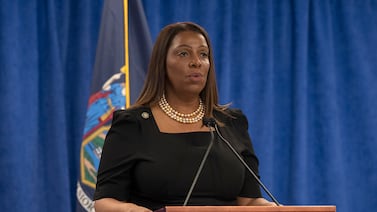Indiana education leaders this week reported 2,845 coronavirus cases in schools since the beginning of the fall semester, according to the state’s new school COVID dashboard. That’s 491 cases more than last week — thanks largely to more schools contributing data.
But while the database gives a peek at the number of cases in schools across the state, the dashboard lacks other data that public health experts and superintendents say would put into context the spread of COVID-19 in schools and would be more useful to them.
For instance, it doesn’t list the percentage of people in schools testing positive, known as the positivity rate. That depicts the extent of the pandemic and helps gauge the relative safety of opening campuses. Indiana’s seven-day positivity rate has been between 4% and 5%. If it reaches 10%, that could cause concern, said Thomas Duszynski, a epidemiology professor at IUPUI’s Richard M. Fairbanks School of Public Health.
The school COVID database, which is a part of a statewide coronavirus data website, lists newly reported and total COVID-19 cases related to schools. The dashboard, made public last Wednesday, is a collaboration of the Indiana State Department of Health and schools across Indiana. It lists the current week’s new and total coronavirus cases for students, teachers, and school staff.
But the webpage offers only a partial picture because it lacks data from 1,067 schools, nearly 40% of those in the state. In the past week, 396 more schools reported their data, bringing the total up to 1,755 schools submitting case numbers.
The influx of data bumped up the total cases among students, teachers and school staff since school began.
Indiana State Health Commissioner Dr. Kristina Box said that health department officials are working to remove duplicate entries from multiple sources.
The dashboard also doesn’t provide running totals nor does it add up the categories. It has a map showing schools and their current case count, but most numbers are suppressed to protect privacy because the numbers total less than five cases.
“It’s awfully difficult when you’re trying to make some broad sweeping generalizations about schools across Indiana when you only have half the schools that are reporting,” Jeff Butts, the superintendent of Wayne Township schools, said. Instead, he relies on the township’s own database on COVID cases.
“I don’t need the state’s dashboard,” he said.
The state does not require schools to submit data for the dashboard. Box said last week officials are trying to get lagging schools to send in their information.
Drawing on multiple sources of information could help show how much COVID-19 has spread in an area, since school districts often extend into different counties, Duszynski said. It would be useful if the dashboard showed the positivity rate, trends over time, and data by age and grade level and within school districts, he said.
“I think the local data is the most critical for us to be able to make decisions based on what’s happening in our community and in our schools,” Butts said. “I don’t foresee any statewide data that is reported being any more useful than what we’re collecting here locally.”
The state originally created the dashboard after pushback from the journalists and stakeholders about the lack of transparency with COVID-19 in schools.
Pike Township Superintendent Flora Reichanadter also said she relies on her own district data, but sees how a dashboard — with more data — could help families wanting to compare school districts to decide if an immunocompromised child should participate in an athletic game or to determine whether their child should have virtual rather than in-person instruction.
Just publishing the dashboard, she said, shows some transparency. “If it is something that somebody wants to look at, they can and see,” she said.






